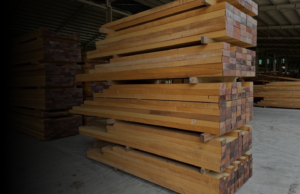Frequently Asked Questions
Everything You Need to Know About Wood Cut Sizes
 wood cut sizes, wooden decking, wooden flooring, carpentry services[/caption]
wood cut sizes, wooden decking, wooden flooring, carpentry services[/caption]
Timber undergoes various transformations from the moment a living tree is cut until it becomes functional furniture or a door in your home. After the tree is felled and its branches pruned, the result is timber logs. These logs must then be sliced, cut, and peeled to be suitable for manufacturing furniture or doors. The dimensions obtained from cutting these timber logs at a sawmill are commonly referred to as wood cut sizes.
Typically, larger dimensions such as 6”x4” and 5”x3” (and occasionally even as large as 12”x4” or 11”x3”) are used for crafting door and window frames. For door shutters, planks of varying widths with a thickness of 1.5” or 2” are commonly utilized.
It can be challenging to specify the exact wood cut sizes for furniture, as each piece has unique requirements. However, in general, the dimensions for furniture tend to be smaller compared to those needed for larger wood products like doors and frames.
The question should be rephrased, as a deck or patio is not ‘built’ but rather refers to an outdoor area surrounding a swimming pool or adjacent to a house. A better question would be, ‘What are the recommended woods for deck or patio flooring?’ One of the best options is IPE, a dense timber species from the Amazon forest, ideal for areas exposed to sun and rain, making it a top choice for exterior flooring worldwide. Some people also use Pyinkado, known as Ironwood in the trade, though it is considered an inferior substitute for IPE.
Kitchen cabinets are typically made from plywood, which is a manufactured product made from veneers of various timber species, most commonly Gurjan. However, in rare cases, solid wood cut sizes are also used for kitchen cabinets. In such instances, species like teak, pine, beech, or oak are preferred.
A decade ago, sawmills in India thrived as most imported timber arrived in log form and was cut to size locally. However, the situation has since changed, with pre-cut timber sizes now being imported, already processed at the source. These standard sizes are ready to use, making customization much more difficult.
There are several types of wood joints, such as the butt joint and miter joint. The choice of joint depends on the specific application and requirements. For example, a tongue and groove joint is typically used in wood flooring, while a finger joint is commonly used to join smaller pieces of wood together to create a larger sheet.
Although various measurement systems are used worldwide to calculate wood cut sizes, in India, we typically use the cubic feet (CFT) system. The cubic feet of a wood cut size is calculated by multiplying the length, breadth, and thickness, all measured in feet.
- Usage varies—wood that is suitable for a door frame may not be ideal for door shutters. Similarly, wood that works well for flooring may not be suitable for door frames, and vice versa.
- The dimensions and section sizes of wood you choose will directly affect the quantity you need to source. If you’re working with a budget, these factors are important, as they influence both the amount of timber required and its overall cost.
- Seasoning – Using well-dried timber is crucial for ensuring durability and longevity. However, it’s not always feasible for timber traders to supply fully seasoned wood. As a result, the responsibility of proper seasoning often falls on the buyer to ensure the best results.
The timber market in India has transformed over the last decade, shifting from log suppliers to ready-cut size suppliers. As a result, the traditional model of purchasing timber in log form and cutting it into sizes has become obsolete. Now, standard-sized cut pieces are readily available off the shelf. Buyers should ensure that the sizes are well-seasoned or allow for proper seasoning after purchase.
Approximately 90% of timber consumption in India is met through imports. Therefore, when addressing the above question, we primarily focus on the various types of wood imported into the country. The broad categories of wood include:
- Construction Grade Timber: Merbau (Honne), Saal, Burma Teak, African Teak, and Latin American Teak.
- Timber suitable for interior use includes beech wood, oak, ash, walnut, and pine.
There are different types of timber suited for different categories, such as construction, interior design, and flooring. Therefore, buyers should consult trusted experts, including timber suppliers, civil contractors, architects, and carpenters, to select the appropriate type of wood.
Wood is classified into two main categories: hardwood, which is denser and heavier, and softwood, which is less dense and lighter. However, not all timber fits neatly into these categories; some species fall between them and are referred to as semi-hardwood or semi-softwood. Teak is a classic example of semi-hardwood.
The growth rate of a tree primarily determines whether it will be classified as hardwood or softwood. Generally, fast-growing trees tend to be softer, while slow-growing trees are harder. Commercially, this often means that hardwood is more expensive, whereas softwood is more affordable.
The growth rate of a tree primarily determines whether it will be classified as hardwood or softwood. Generally, fast-growing trees tend to be softer, while slow-growing trees are harder. Commercially, this often means that hardwood is more expensive, whereas softwood is more affordable.
The question is not ‘where’ but ‘how’ to find high-quality timber. Wood is a natural product, and there isn’t a substantial academic knowledge base to assist customers in selecting high-quality options, which may only be available at one out of ten outlets. Therefore, trust is crucial in choosing the right supplier. As a buyer, you must decide whom to trust—be it a carpenter, civil contractor, architect, or timber trader—based on your intuition and judgment.
When a wood log is peeled into extremely thin layers known as veneer (typically ranging from 0.3mm to 0.5mm in thickness), these veneers are glued to 4mm plywood to facilitate easier transport and handling. Veneers serve as an effective alternative to solid wood, particularly in the furniture and interior decoration industries, and they are also cost-effective in comparison to solid wood.
Wood doors can be made from various species, such as teak and honne (merbau). Additionally, there are manufactured options like flush doors, where wood battens are arranged in vertical and horizontal patterns and sandwiched between two plywood sheets.
In terms of wooden windows, options include plain windows and French windows (also known as Georgian windows). However, UPVC and aluminum windows are increasingly popular as effective replacements for traditional wooden windows.
In terms of wooden windows, options include plain windows and French windows (also known as Georgian windows). However, UPVC and aluminum windows are increasingly popular as effective replacements for traditional wooden windows.
Yes, it’s essential to have a smooth, dry, and hard surface for laying wood flooring. This can be easily achieved with a screed concrete base. Alternatively, if there is an existing floor made of another material, wood flooring can be installed over it, provided the surface is also smooth, dry, and hard.


